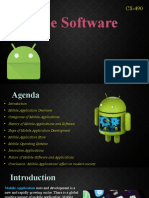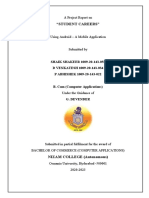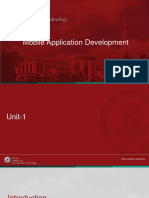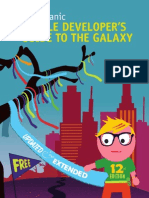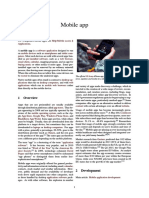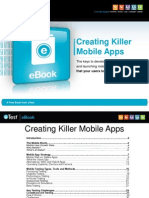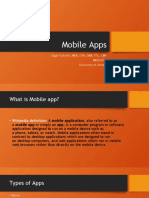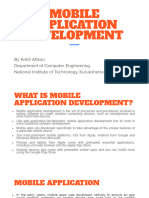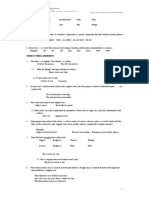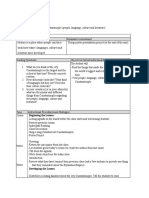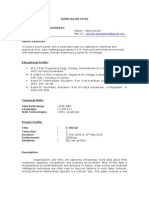0% found this document useful (0 votes)
47 views51 pagesMobile App Dev: A Beginner's Guide
This document provides an overview of mobile app development processes. It discusses that mobile apps can be developed using either project-based or product-based development. Product-based development, where the developer identifies opportunities, is most common for mobile apps. The typical mobile app development process involves strategy, analysis and planning, design, development, testing, and deployment phases. User stories and acceptance criteria are important for planning and testing app features. The document also briefly discusses mobile trends like Android's market share and the impact of app ratings on downloads.
Uploaded by
KorneaKosteaCopyright
© © All Rights Reserved
We take content rights seriously. If you suspect this is your content, claim it here.
Available Formats
Download as PDF, TXT or read online on Scribd
0% found this document useful (0 votes)
47 views51 pagesMobile App Dev: A Beginner's Guide
This document provides an overview of mobile app development processes. It discusses that mobile apps can be developed using either project-based or product-based development. Product-based development, where the developer identifies opportunities, is most common for mobile apps. The typical mobile app development process involves strategy, analysis and planning, design, development, testing, and deployment phases. User stories and acceptance criteria are important for planning and testing app features. The document also briefly discusses mobile trends like Android's market share and the impact of app ratings on downloads.
Uploaded by
KorneaKosteaCopyright
© © All Rights Reserved
We take content rights seriously. If you suspect this is your content, claim it here.
Available Formats
Download as PDF, TXT or read online on Scribd
/ 51

